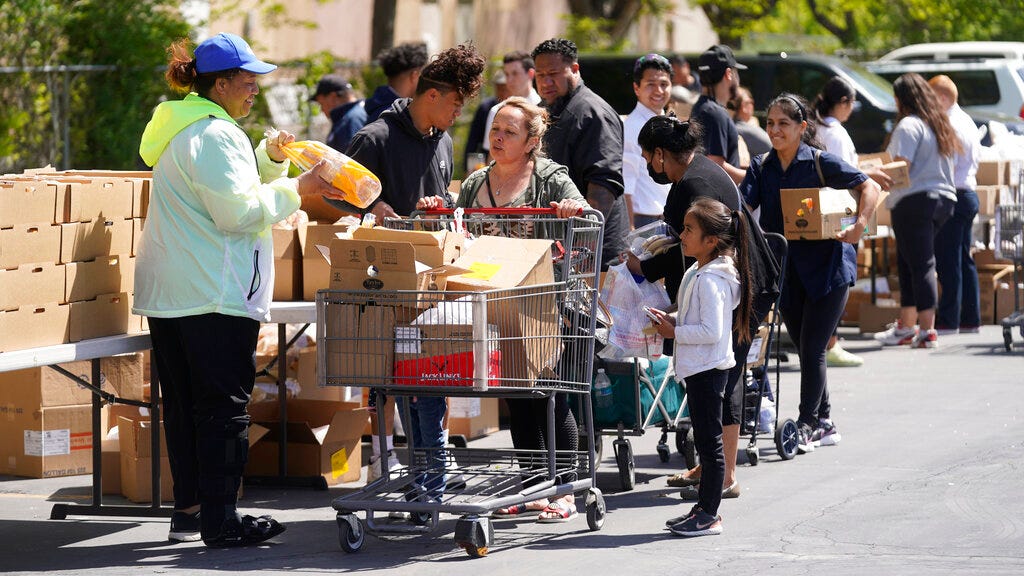- Food banks are experiencing increased demand and long lines as inflation raises the cost of groceries.
- A food bank CEO says the end of the child tax credit, pandemic unemployment benefits, and stimulus are also responsible.
- Higher wages and shrinking unemployment aren't enough to outpace inflation.
Melvin Adkins' family has been using a food pantry in Kent County, Maryland, since the 77-year-old retired a few years ago.
"Food prices going up have impacted everything," Adkins told Insider."You used to be able to get a package of meat for cheap and now it costs you two dollars more, so you have to cut back."
Grocery inflation is currently at its highest point since 1979, while prices for essentials like gas and rent are also on the rise. Prices for food at home, a category that includes groceries, have risen 11.9% in May year-over-year, according to the Consumer Price Index. Milk and dairy prices have gone up even more, with meat and fish up 14.2% and eggs up 32.2% over May 2021.
Many people are joining Adkins in using their local food banks regularly. Paco Vélez, president and CEO of Feeding South Florida, told Marketplace's Samantha Fields that more people are attending his food bank than at the start of the pandemic, when many low-income households became unemployed. In early 2020, he said that the number of visitors they received more than doubled to more than 1.5 million.
"As people started getting back to work, that number started to decrease and stabilize," he said, saying that their regular number of visitors is over a million again. "But then they got hit again, this time with inflation."
Even though employment numbers are back up, many people are worse off now because the government is no longer providing the cushion it did in 2020 and 2021: namely, expanded unemployment benefits, a monthly child tax credit, and stimulus checks.
"All of that helped keep the worst of the COVID-era hunger at bay," Alison O'Toole, CEO of Second Harvest Heartland, a food bank in Minnesota, told Marketplace, adding that spiking inflation means food insecurity has increased again. "We're living through the hungriest summer in recent history."
People are getting higher wages, but it's not enough to combat rising food prices
Although wages have been rising over the past two years as workers have negotiated their way to higher salaries, only a handful of them have managed to secure paychecks that outpace record-high inflation, which hit a 40-year peak in June.
This means Americans are getting less bang for their buck — even less than they were at the beginning of the pandemic.
Americans saw high savings at the start of the pandemic, largely due to stimulus checks from the federal government. Moody's Analytics estimated that households built up an extra cash cushion totaling $2.6 trillion from the beginning of the pandemic through the end of 2021.
But the last stimulus was in March of last year, and other government fiscal aid has ceased as well.
Unemployment funds from the Coronavirus Aid, Relief, and Economic Security Act (CARES Act) ended last September, which the left-leaning Century Foundation estimated to impact 7.5 million workers.
And in January, Child Tax Credits payments stopped due to lack of bipartisan support for President Biden's Build Back Better Act. For six months, parents all over the US had received advanced child tax credit monthly payments of $250 to $300 per child via direct deposit. 3.7 million children slipped into poverty after the payments ended, according to a study from Columbia University researchers.
The end of those income streams — as well as historic inflation — means that people are going hungry.
"It's really impossible to get by now without some help," Tomasina John, a visitor at St. Mary's Food Bank in Phoenix, Arizona, told the Associated Press'Anita Snow and Eugene Garcia last week. "The prices are way too high."
